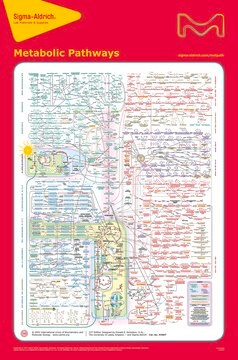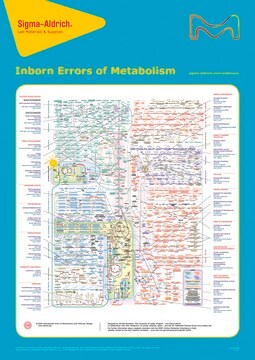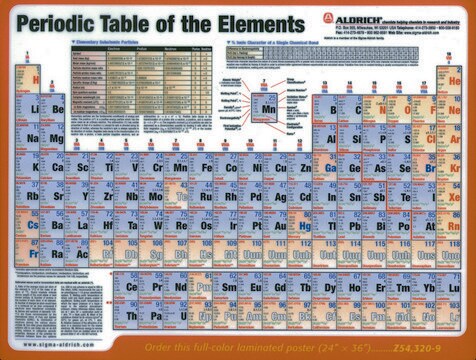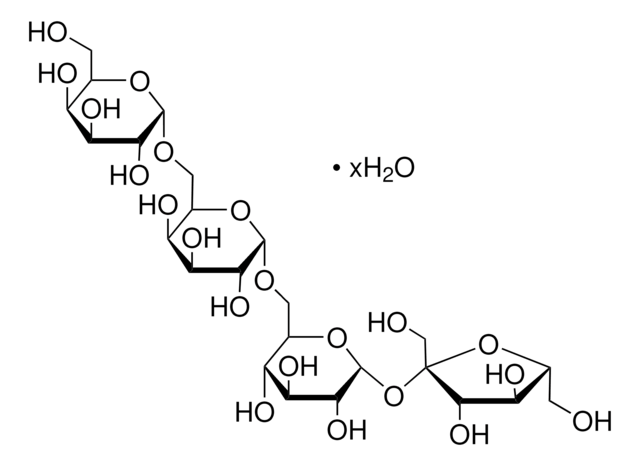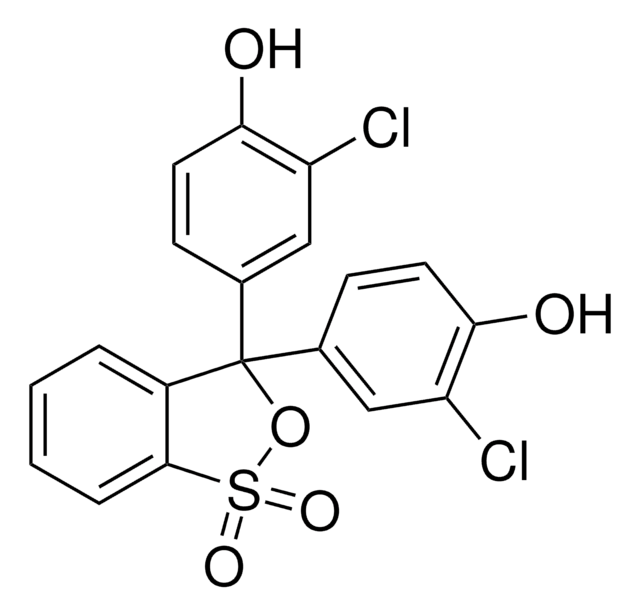M2250
D-(+)-Maltose monohydrate
Type II, ≥95%
Synonym(s):
4-O-α-D-Glucopyranosyl-D-glucose, Maltobiose
Sign Into View Organizational & Contract Pricing
Select a Size
All Photos(1)
Select a Size
Change View
About This Item
Empirical Formula (Hill Notation):
C12H22O11 · H2O
CAS Number:
Molecular Weight:
360.31
Beilstein/REAXYS Number:
93798
EC Number:
MDL number:
UNSPSC Code:
12352201
PubChem Substance ID:
NACRES:
NA.21
Recommended Products
biological source
corn
Quality Level
type
Type II
assay
≥95%
form
powder
optical activity
[α]20/D 129 to 131 °, c = 4% (w/v) in water + trace NH4OH
impurities
≤1.5% Glucose
≤5% Maltotriose
color
white
useful pH range
5.0-7 (25 °C, 180 g/L)
mp
125.13 °C (1013.25 hPa)
Looking for similar products? Visit Product Comparison Guide
Application
- Evaluation of the variations in chemical and microbiological properties of the sourdoughs produced with selected lactic acid bacteria strains during fermentation: This research explores the use of D-(+)-Maltose monohydrate in fermentative processes, highlighting its impact on the chemical and microbial dynamics in food technology, pertinent for industrial biosynthesis applications in the life sciences sector (Boyaci Gunduz et al., 2022).
Biochem/physiol Actions
Maltose is a disaccharide containing two glucose molecules with an α(1→4) glycosidic linkage. Maltose can be derived from starch in food through the action of amylase. Maltose can be found in many food products, including beer, cereals, and pasta.
Other Notes
To gain a comprehensive understanding of our extensive range of Disaccharides for your research, we encourage you to visit our Carbohydrates Category page.
Storage Class
13 - Non Combustible Solids
wgk_germany
WGK 1
ppe
Eyeshields, Gloves, type N95 (US)
Choose from one of the most recent versions:
Already Own This Product?
Find documentation for the products that you have recently purchased in the Document Library.
Customers Also Viewed
Wesley D Black
PloS one, 15(12), e0238901-e0238901 (2020-12-19)
Despite the recent increase in interest in indoor air quality regarding mould, there is no universally accepted standard media for the detection of airborne fungi, nor verification of many commonly used techniques. Commonly used media including malt-extract agar (MEA), Sabouraud
Vikas A Tillu et al.
Nature communications, 12(1), 931-931 (2021-02-12)
Caveolae are spherically shaped nanodomains of the plasma membrane, generated by cooperative assembly of caveolin and cavin proteins. Cavins are cytosolic peripheral membrane proteins with negatively charged intrinsically disordered regions that flank positively charged α-helical regions. Here, we show that
S K Aoki et al.
Journal of bacteriology, 191(6), 1777-1786 (2009-01-07)
Contact-dependent growth inhibition (CDI) is a mechanism identified in Escherichia coli by which bacteria expressing two-partner secretion proteins encoded by cdiA and cdiB bind to BamA in the outer membranes of target cells and inhibit their growth. A third gene
Lichao Chen et al.
Developmental cell, 53(4), 444-457 (2020-04-25)
The redox-based protein S-nitrosylation is a conserved mechanism modulating nitric oxide (NO) signaling and has been considered mainly as a non-enzymatic reaction. S-nitrosylation is regulated by the intracellular NO level that is tightly controlled by S-nitrosoglutathione reductase (GSNOR). However, the
Dengjun He et al.
Journal of separation science, 38(13), 2229-2237 (2015-04-16)
Trehalose, a nonreducing disaccharide, has been extensively applied to food, cosmetics, and pharmaceutical goods. The resultant solution of trehalose prepared by enzymatic methods includes high amounts of maltose. However, it is quite difficult to separate maltose and trehalose on an
Our team of scientists has experience in all areas of research including Life Science, Material Science, Chemical Synthesis, Chromatography, Analytical and many others.
Contact Technical Service
